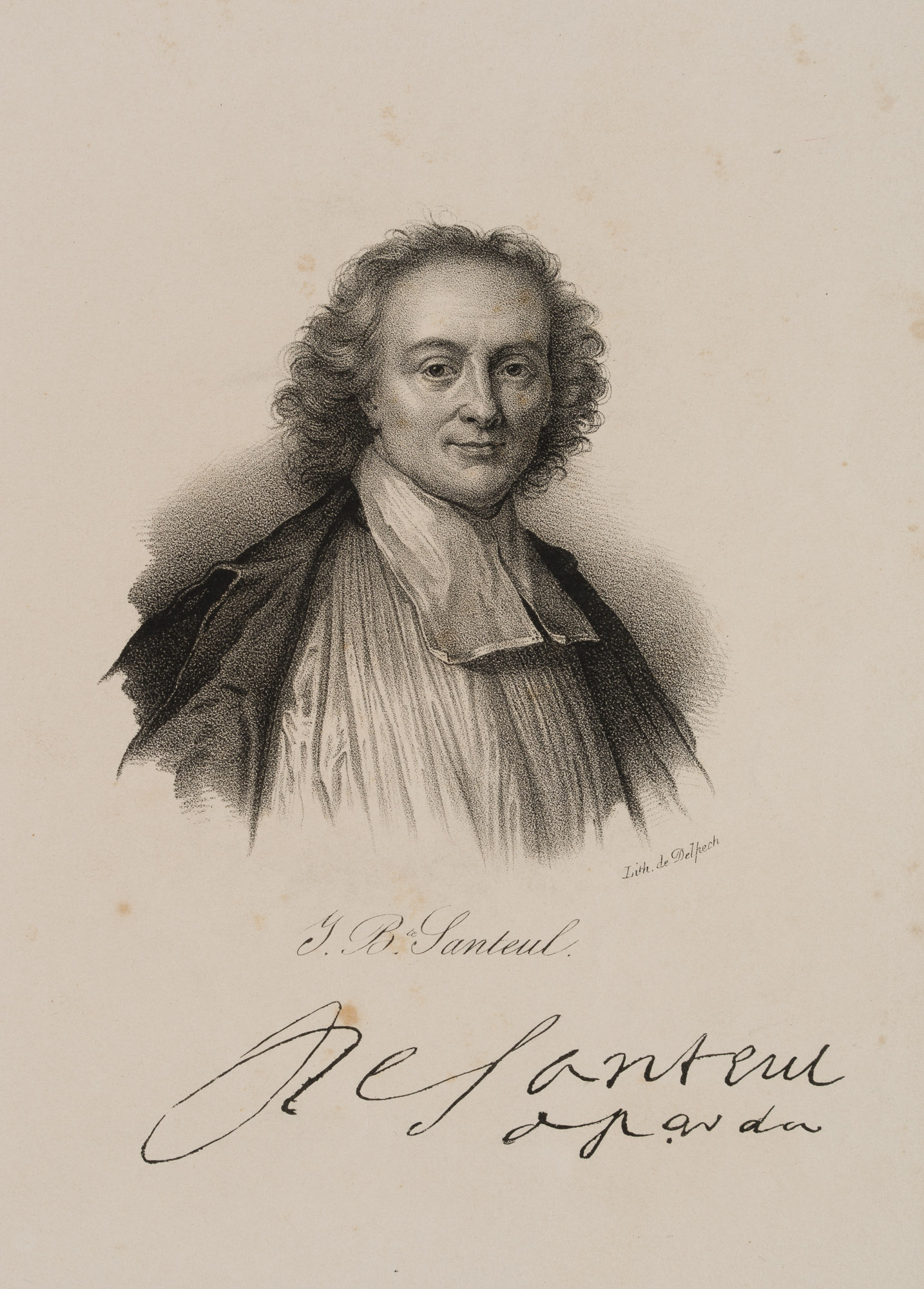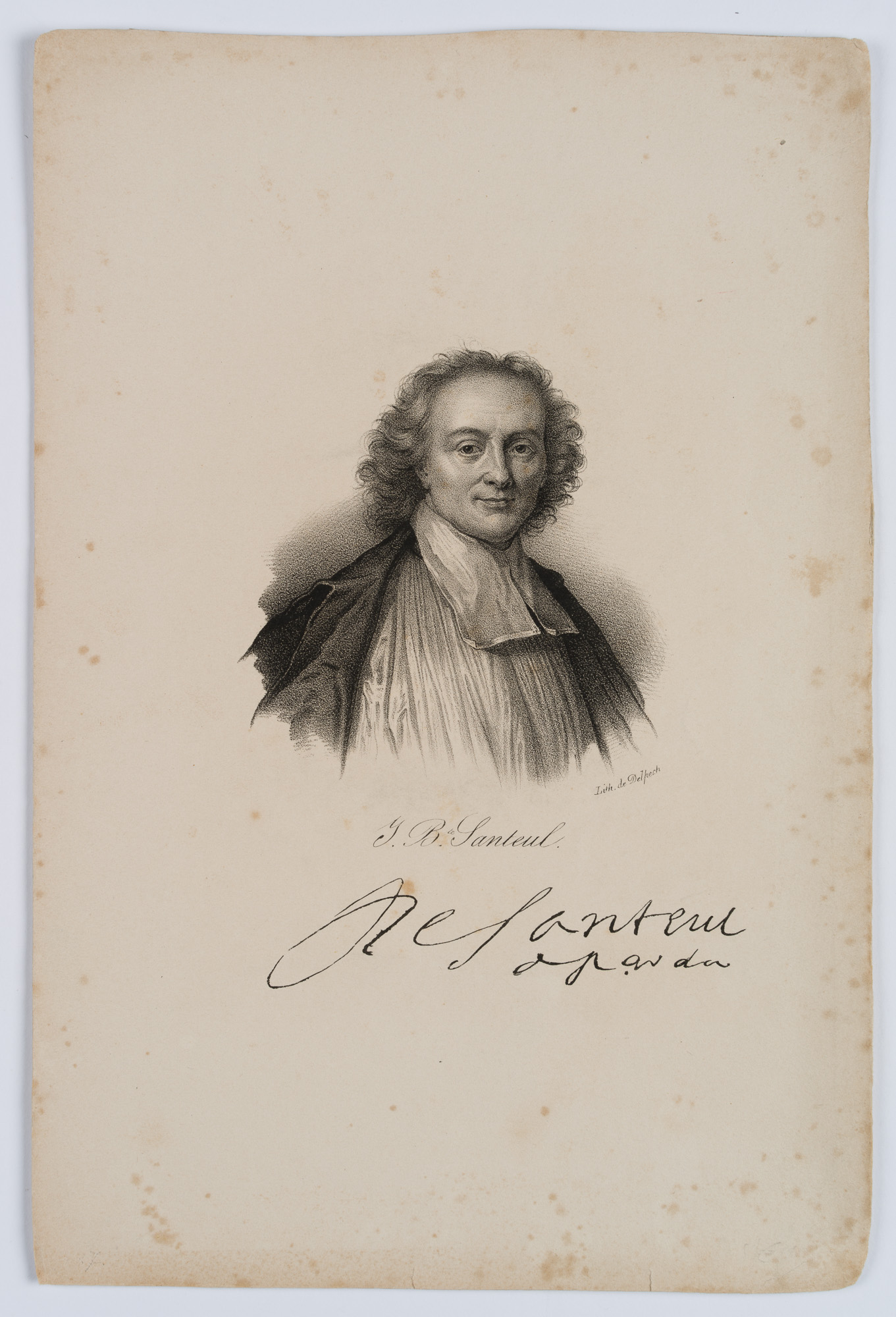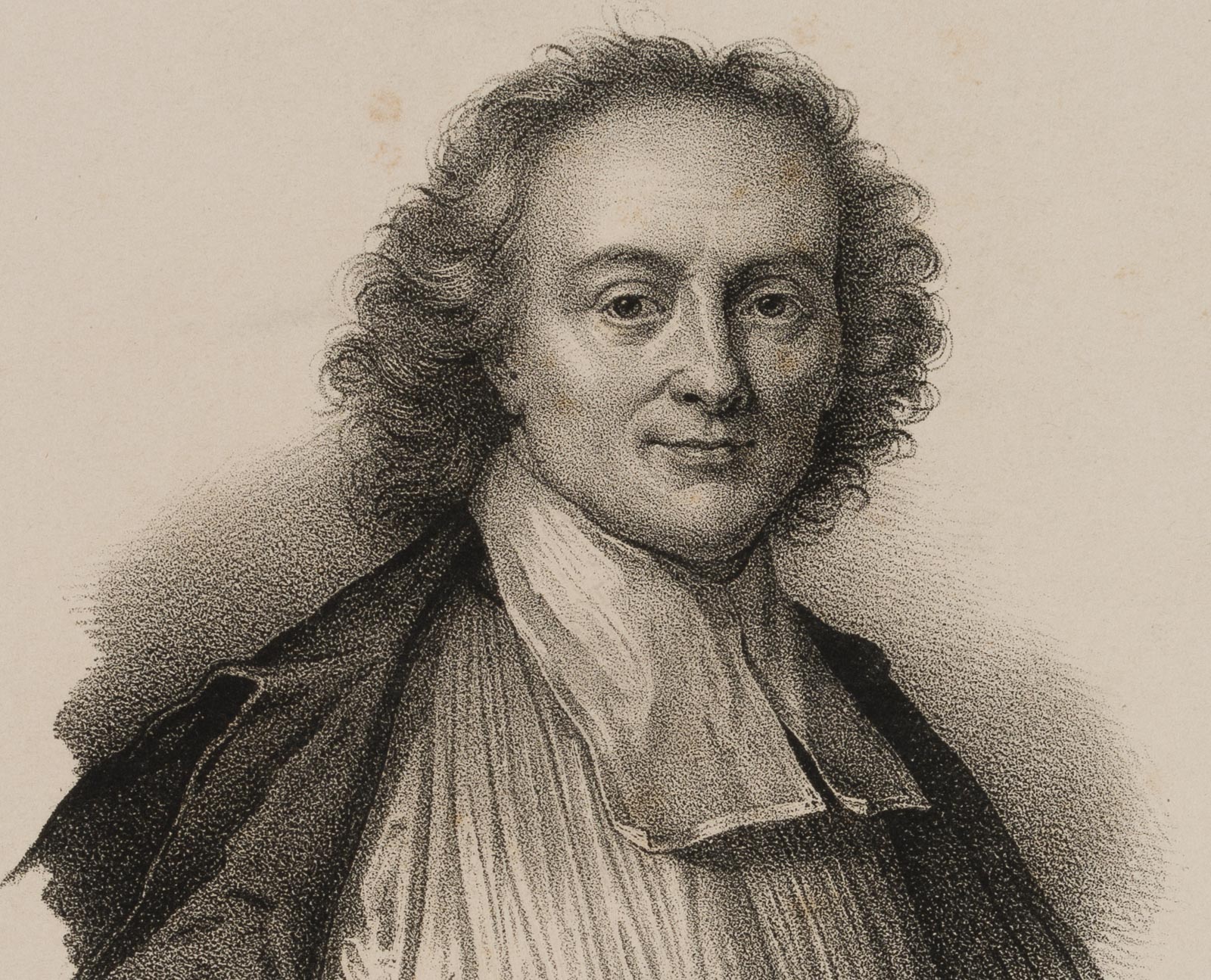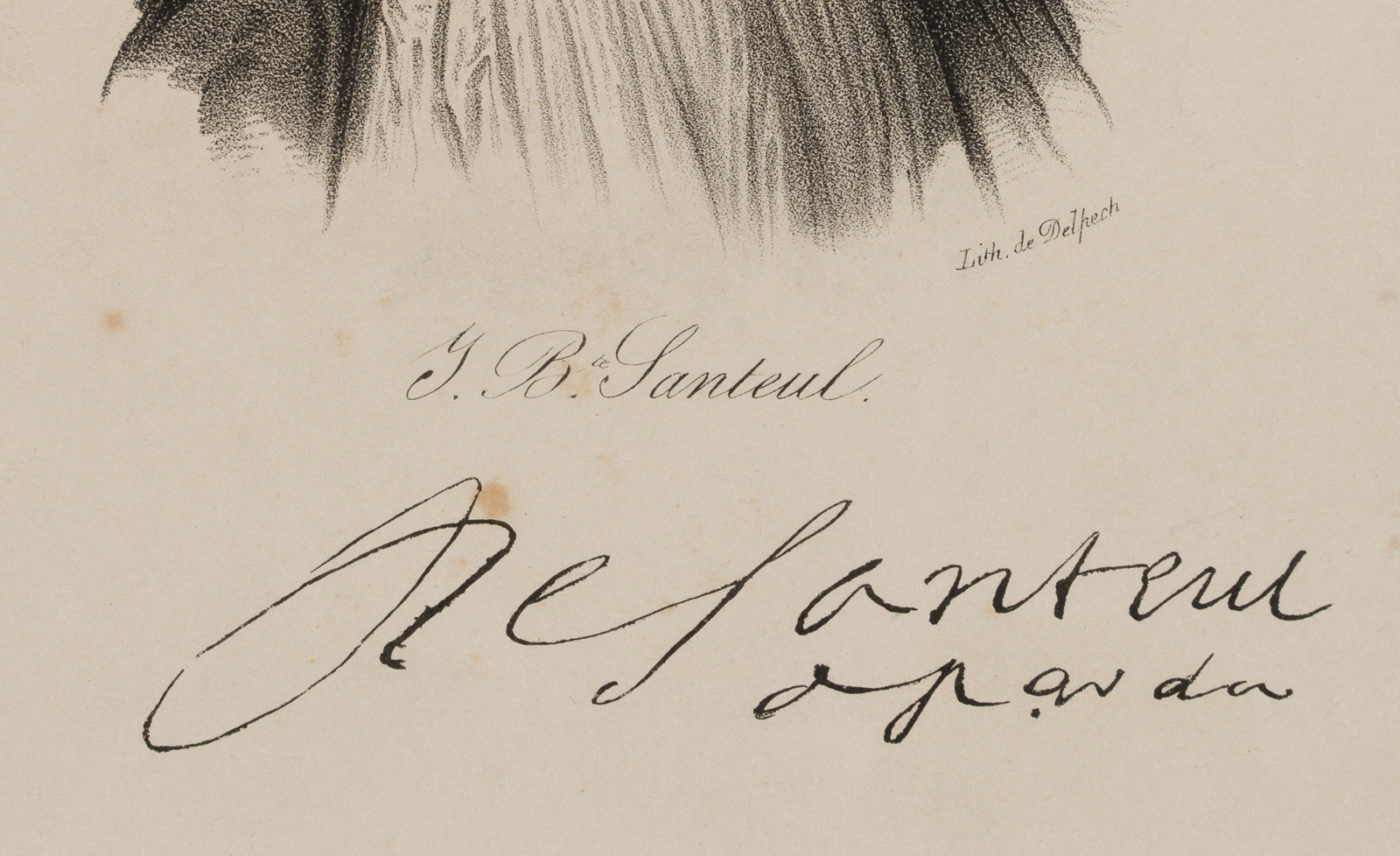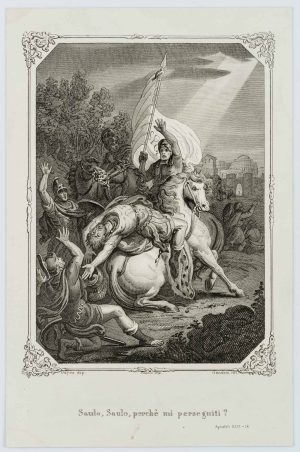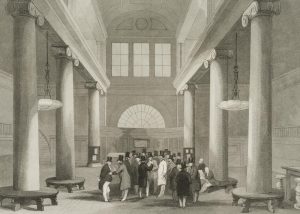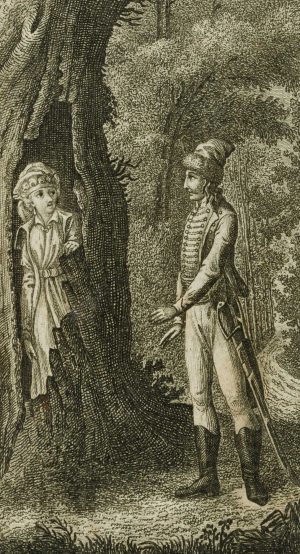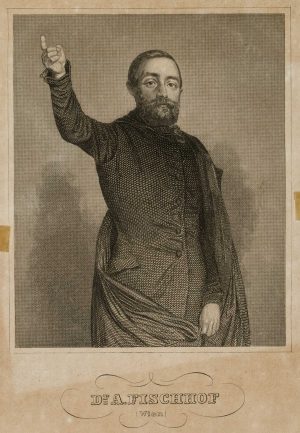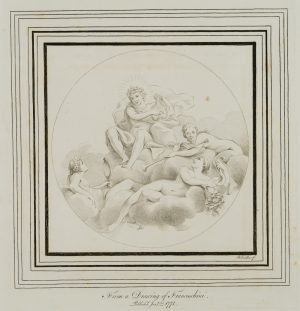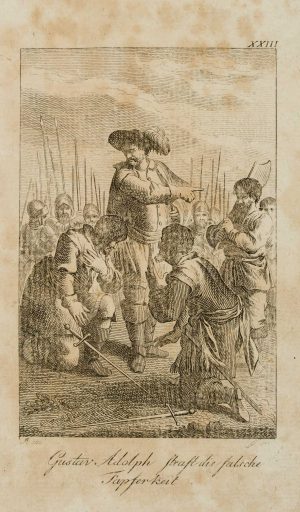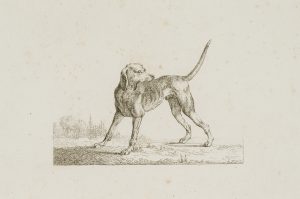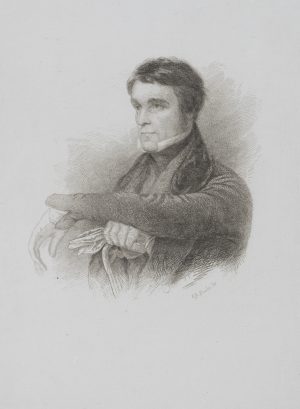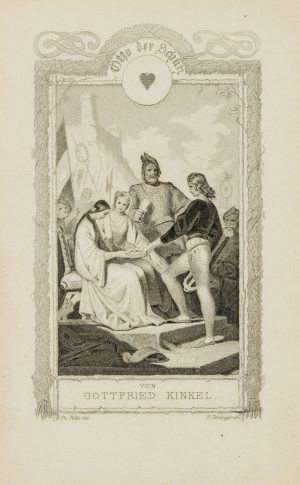Francois Séraphin Delpech (1778 Paris – 1825 ebd.), Porträt des Jean Baptiste Santeul, um 1800, Lithographie
- Technik: Lithographie auf Papier
- Datierung: um 1800
- Beschreibung: Lithographie von F. S. Delpeche, signiert und bezeichnet: “Lith. de Delpech / I. B. Santeul”. Sehr schönes Porträt des J. B. Santeul. Santeul blickt den Betrachter direkt an, er scheint leicht zu lächeln. Lange Locken umspielen sein Gesicht. Unter einem dunklen Umhang trägt er ein weißes Hemd aus fließendem Stoff. Jean Baptiste Santeul (Paris 1630 – 1697 Dijon). Nach dem Studium trat Santeul der Abtei der Regularkanoniker von Saint-Victor bei. Er schrieb lateinische Dichtungen, zunächst profanen, dann christlichen Inhalts. François Séraphin Delpech (1778 – 1825) war franz. Lithograph und Schriftsteller.
- Schlagworte: Porträt, Frankreich, Figürlich, 1800-1849
- Größe: 22,5 cm x 28,5 cm
- Zustand: Die Darstellung macht einen sehr guten Eindruck. Das Blatt ist altersbedingt stockfleckig, Unterkante mit zwei winzigen Einrissen, Blattecken bestoßen; verso an der Oberkante mit zwei kleinen Klebestreifen einer früheren Montage.
English Version:
Francois Séraphin Delpech (1778 Paris – 1825 ibid.), Portrait of Jean Baptiste Santeul, c. 1800, Lithography
- Technique: Lithography on Paper
- Date: c. 1800
- Description: Lithograph by F. S. Delpeche, signed and inscribed: “Lith. de Delpech / I. B. Santeul”. Very nice portrait of J. B. Santeul. Santeul looks directly at the viewer, he seems to smile slightly. Long curls surround his face. Under a dark cloak he wears a white shirt of flowing fabric. Jean Baptiste Santeul (Paris 1630 – 1697 Dijon). After his studies, Santeul joined the Abbey of the Regular Canons of Saint-Victor. He wrote Latin poetry, first of profane, then of Christian content. François Séraphin Delpech (1778 – 1825) was a French lithographer and writer. Lithographer and writer.
- Keywords: 19th century, Figurative, Portraits, France,
- Size: 22,5 cm x 28,5 cm (8,9 x 11,2 in)
- Condition: The image makes a very good impression. The sheet is foxed due to its age, lower edge with two tiny tears, corners of the sheet bumped; at the back side’s upper edge with two small adhesive strips of an earlier mounting.

